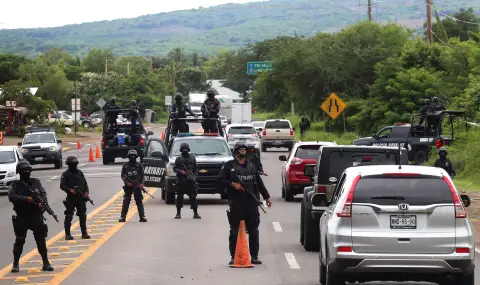American authorities announced late last week that they had detained Ismael “El Mayo” Sambada, one of the leaders of the Mexican cartel “Sinaloa”. According to US Homeland Security Secretary Alejandro Mayorkas “Sinaloa” is the largest importer of drugs into the US market. Why is he so strong?
One of El Chapo's heirs
The cartel was founded in the 1980s in the Mexican state of the same name. Together with the neighboring states of Durango and Chihuahua, the region is known as the “Golden Triangle of Drug Trafficking”, as it is home to the biggest Mexican drug lords and their families.
El Mayo is considered one of the founders of the “Sinaloa” cartel. He, along with the sons of Joaquín Guzmán, better known as El Chapo, is believed to be the head of the organization.
The founder of the cartel “El Chapo” is known for his spectacular prison escapes. He was first arrested in Guatemala on June 9, 1993, extradited to Mexico and sentenced to 20 years and 9 months in prison. In 2001, he escaped from the high-security Puente Grande prison in the Mexican state of Jalisco by hiding in laundry.
In 2014, he was detained again, but managed to escape only a year later from Mazatlan prison through a tunnel.
On January 8, 2016, six months after his second escape, he was arrested again by Mexican investigators and extradited to the United States a year later. There he was held at the maximum security prison ADX in Florence, Colorado.
Media reports that American authorities managed to detain Sambada by deception. A high-ranking member of the cartel tricked the drug lord into boarding a private jet, ostensibly to inspect illegal drug-growing fields in Mexico. Instead of flying south, however, the plane turned north and landed in El Paso, Texas. There, El Mayo and El Chapo's son - Joaquin Guzmán López - were detained.
“Sinaloa” is Mexico's leading cartel
Since US authorities declared war on Colombian cartels in the 1980s, Mexico has been at the center of trafficking for the US. They start building multiple tunnels that are used for smuggling. In the 1990s, the intensified fight of the Mexican government against the drug mafia led to the weakening and fragmentation of the cartels in the country. “Sinaloa” however, he managed to prevail against his competitors and establish himself.
The cartel is divided into four factions - one subordinate to El Mayo, and the second "Los Chapitos" - to El Chapo's sons. The third faction is controlled by Joaquín Guzmán's brother Aureliano, and the fourth by Rafael Caro Quintero, who was arrested in 2022 in Northern Mexico.
In the last annual report of the US Drug Enforcement Agency DEA, the structure of the criminal organization is described as follows: “The four groups do not have a common leader. They act independently of each other, but they cooperate with each other.“ However, “internal power struggles and shifting alliances call into question the viability of the model”.
The main culprits of the fentanyl crisis
The “Sinaloa” operates in over 50 countries. Their most serious market is the United States, where the cartel controls most of the drugs smuggled from Mexico - marijuana, cocaine, heroin, methamphetamines and others. According to various sources, their annual profit is between 3 and 39 billion dollars.
The "Sinaloa" cartel, along with another Mexican criminal organization - "Jalisco", are believed to be responsible for the illegal trade in fentanyl in the United States. The synthetic opioid is a pain reliever that is between 75 and 100 times stronger than morphine.
According to estimates by the US authorities, in 2021 about 70,000 people in the US died from the use of fentanyl for non-medical purposes. This makes opioids the leading cause of death in the US population between the ages of 18 and 45.
Astrid Prange
